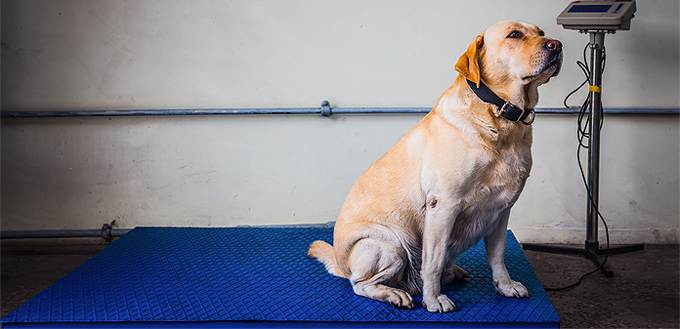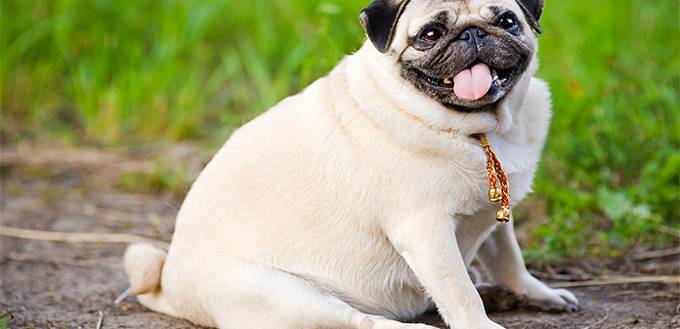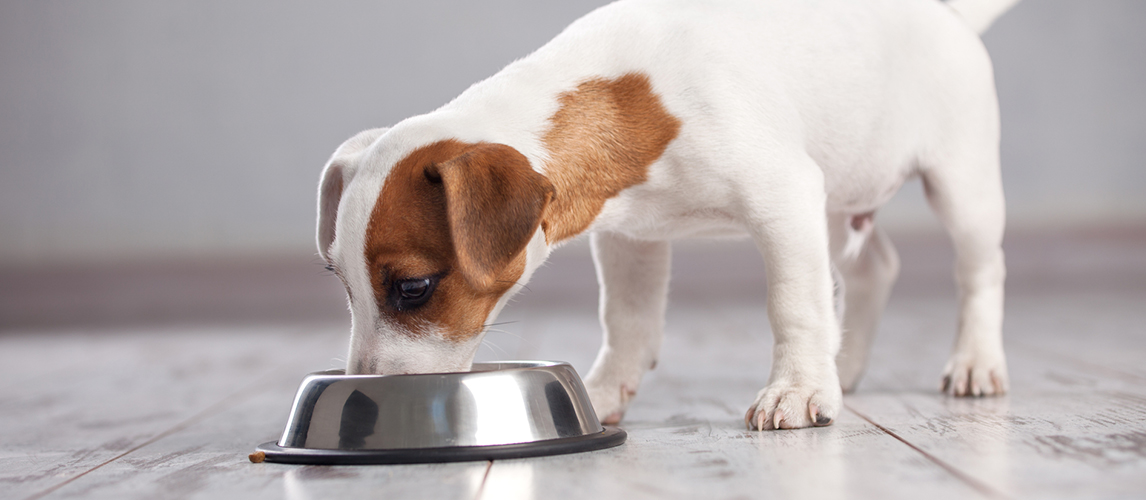The most important consideration is whether you need to put your dog on a diet! Have a look at your dog from above; you should be able to see it going in where its waist should be (between the ribs and the hips). Feel along your dog’s spine and ribs, you should be able to feel them if they’re difficult to feel then he’s carrying too much weight.
Look at your dog from the side when she’s standing up, her stomach shouldn’t be sagging down, that’s another sign that she’s carrying too much weight. If you’re not sure how much your dog should ideally weigh check out the information for your particular breed or visit your vet.

What Can I Do If My Dog Is Overweight?
Think about why your dog is overweight, neutering can cause a dog’s metabolism to change, some medical conditions or medication can cause a dog to gain weight, or he may simply be eating too much and/pr not getting enough exercise. As always, if in any doubt check with your vet so that any underlying medical conditions can be checked out.
If your dog does have any particular health issues you will need to discuss a suitable weight loss/exercise regime with our vet to ensure the overall wellbeing of your dog.
- Working out how much your dog weighs at home
- Carrying your dog weigh you and it on a bathroom scale, take a note of the weight
- Weigh yourself note the weight
- Subtract your weight from the combined weight of you and your dog
- The remainder is the weight of your dog
Once you have established that your dog is overweight and that there are no underlying medical issues there are simple things that you can do to help him lose the excess weight and get healthier.
You May Also Like: Pet Scales
Feeding Your Dog
Stop giving your dog food scraps, either from your plate or letting him eat food that falls from the table or the kitchen work surfaces. Cut down on dog treats. Gradually cut the number in half and then in half again, or swap them for healthier treats like:
- Carrot
- Green beans
- Rice cakes
Reduce the portion size you’re giving your dog. Most dog food labels will tell you the correct portion size for the weight of your dog (either per meal or per day). Make sure you’re weighing that amount (choose the smallest portion size for your size of dog), and only feed them that.
Choose a dog food specially designed to help your dog lose weight and feed them according to the pack instructions.
Related Post: Best Dog Food for Weight Loss
Once you know how much your dog should be eating each day divide that amount into a larger number of smaller meals per day so that your dog maintains a better blood sugar level for longer periods. This helps encourage your dog’s body not to store fat.
Even if you’re feeding your dog the correct portion size, you may want to take the bowl away after 15 minutes and not make it available until the next mealtime. Dogs are not very good at self-regulation and so if food is available they’ll eat it whether they’re hungry or not. As long as water is always available they’ll be fine until the next meal.
Exercise
At the same time as looking at your dog’s eating you need to consider upping their exercise too. Check the amount and intensity of exercise your dog should be getting and make sure that you’re giving them the opportunity to get what they need.
Exercise not only burns calories but it also helps to suppress the appetite too. Try to add an extra walk to your dog’s day or build up the intensity of your current walks by speeding up for some parts of it. Take a ball or a Frisbee out with you and encourage your dog to get playful jumping around and running and playing fetch. Aim to get your dog really active for 10 to 15 minutes twice a day.
You May Also Like: Automatic Fetch Machines

Once Your Dog is at a Healthy Weight
A slow, steady weight loss over a reasonable period of time will ensure good results, but a once overweight dog is likely to put weight on again more easily, so you need to ensure that you keep an eye on your dog’s weight. Don’t slip back into the regime that made the dog overweight in the first place so:
- Maintain regular walks and physical activity
- Increase their food intake to 10% to 15% more than it was during weight loss
Summary
Helping your overweight dog to lose weight really boils down to doing the same as you would to lose weight yourself:
- Eat less
- Eat food designed to help weight loss
- Cut down or cut out snacks
- Exercise more
- Keep an eye on the progress
Maintain the weight loss once your dog has reached its target weight by continuing to eat healthily and keep active.
Sources:
- Rebecca Wallwork, 8 Ways to Help Your Overweight Dog, The American Kennel Club
- Healthy, Safe Snacks to Help Your Pet Slim Down, American Society for the Prevention of Cruelty to Animals
Note: The advice provided in this post is intended for informational purposes and does not constitute medical advice regarding pets. For an accurate diagnosis of your pet's condition, please make an appointment with your vet.






